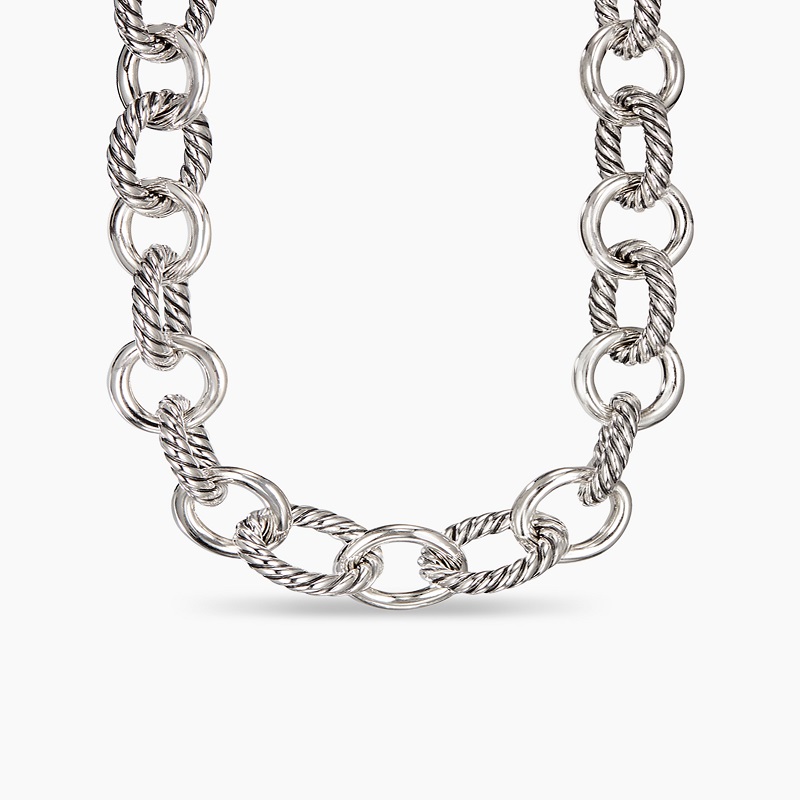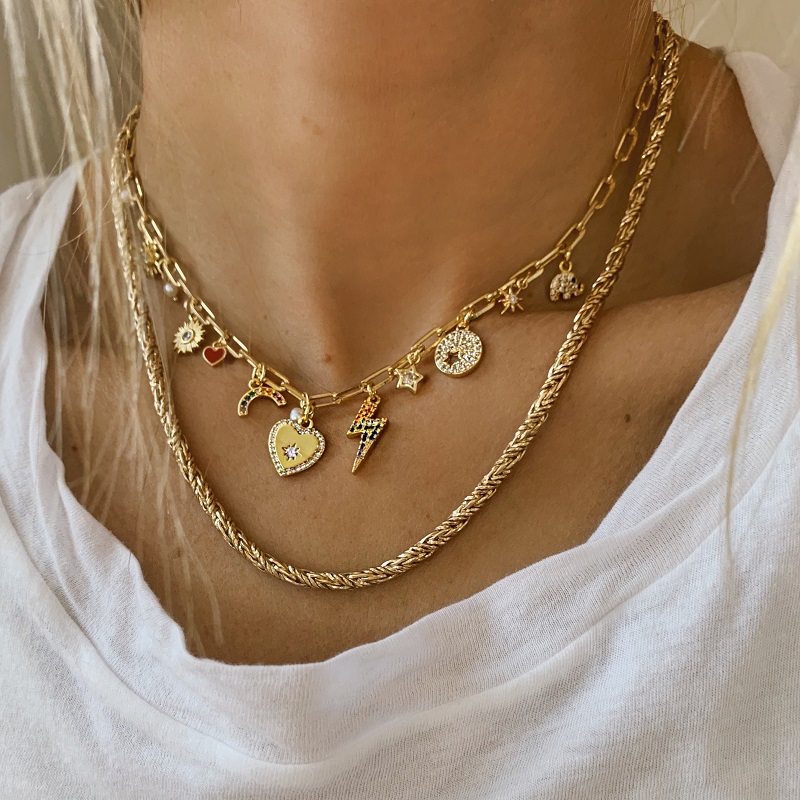How to fix a chain necklace?
Assessing the Damage and Preparing for Repair
How to fix a chain necklace? Necklace repair begins with a careful examination to assess the damage and determine the extent of the repair needed. Addressing a broken chain may seem daunting, but it becomes manageable with a systematic approach. Being prepared with the right knowledge and tools makes the difference between a successful DIY repair and potential frustration.
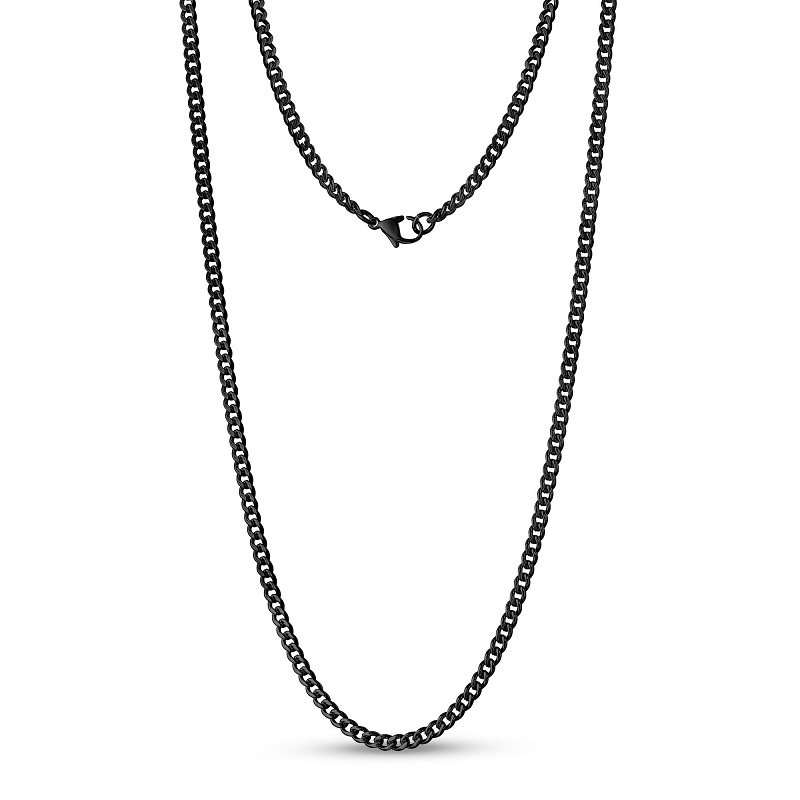
Identifying the Type of Break in Your Necklace
How to fix a chain necklace? When examining your moissanite necklace, the first step is understanding the nature of the break. Whether it’s a snapped chain, a stretched link, or a bent clasp, the type of break will dictate the repair method to be used. For example, a broken link may require soldering, while a stretched link might be fixed with pliers. Study the break closely and determine if any pieces are missing or if the metal is damaged beyond a simple fix.
Tools and Materials Needed for Necklace Repairs
Before you start your DIY necklace repair, ensure you have all the necessary tools and materials on hand. Basic tools may include:
- Needle-nose pliers: to manipulate small chain links
- Soldering iron or torch: for joining metal pieces
- Solder and flux: used during soldering to create a strong bond
- Jeweller’s saw: to cut clean edges for links that need soldering
- Fine-grain sandpaper: to prepare metal surfaces for soldering
- Safety goggles: to protect your eyes during the repair process
Depending on the repair technique, the materials and tools may vary, so tailor your toolkit to the specific needs of your repair. Always prioritize safety when handling tools, especially when working with heat or sharp objects.
Step-by-Step Repair Techniques
How to fix a chain necklace? Navigating the delicate process of mending a broken kendra scott necklace requires patience and precision. Whether you’re a seasoned DIY enthusiast or attempting your first jewellery repair, understanding the different techniques and when to apply them is critical for a successful fix. Let’s dive into the most common repair methods that you can use for your necklace’s renovation.
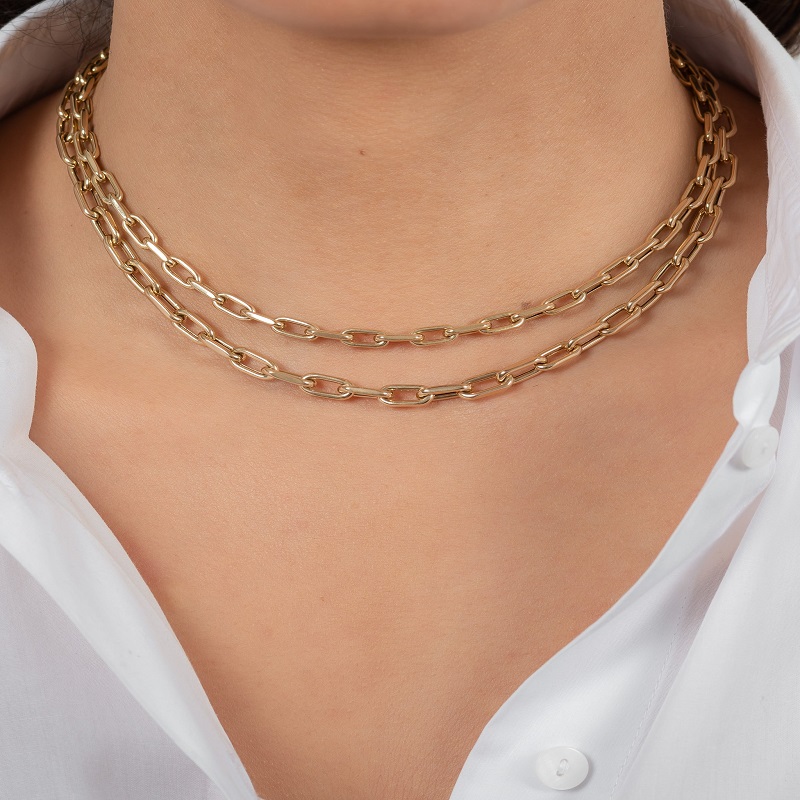
Soldering Broken Chain Links
Soldering offers a permanent solution for reconnecting broken chain links. To effectively solder a chain, clean the affected area to remove any oils or debris. Position the two ends of the broken link together so they touch. Apply a small amount of flux to the join, which helps the solder to flow and bond the metal. Place a small piece of solder atop the join, and using a soldering iron or torch, gently heat the area until the solder melts and fuses the links. Allow the chain to cool and then clean any residue with fine sandpaper, restoring the necklace’s seamless look.
Wire Wrapping as an Alternative Technique
Wire wrapping is a less technical, yet sturdy alternative to soldering. Choose a wire that closely matches your chain’s color and thickness for the most unnoticeable repair. Cut a length of wire and tightly wrap it around both ends of the broken link, securing the break. Use pliers to twist the ends of the wire securely in place and trim any excess. Though not as seamless as soldering, wire wrapping provides strength and is a viable temporary fix for many chain types.
Using Glue for Minor Chain Repairs
Glue is suitable for minor repairs and can be particularly useful for costume jewellery which may not withstand heat. The key is selecting the right glue for the job—ideally, a high-quality jewellery adhesive that dries clear and is specifically designed for metals. Apply a small amount of glue to one end of the broken link, then join it to the other end. Hold in place until the glue sets, usually a few minutes, and allow it to cure completely before wearing the pearl necklace again.
Replacing a Faulty Clasp on Your Necklace
If your clasp is beyond repair, it may need replacing. To do so, remove the broken clasp with pliers, being sure to keep any jump rings or additional hardware. Attach a new clasp of a similar style and size using the existing jump rings, or add new ones if needed. This repair not only restores the necklace’s functionality but can also provide a chance to upgrade the clasp for added security and ease of use.
Throughout the repair process, remember to work with a steady hand and keep your work area organized. While repairs can often be done at home, some may require a professional’s touch—don’t hesitate to seek a jeweler’s assistance if a repair seems beyond your current skills or tools.
Preventative Measures and Maintenance Tips
How to fix a chain necklace? Taking the time to mend a broken chain is a valuable skill, but preventing damage in the first place is even more crucial. By following some preventative measures and maintenance tips, you can extend the lifespan of your necklaces and minimize the need for repairs. Let’s explore some practical ways to protect your cherished jewellery.
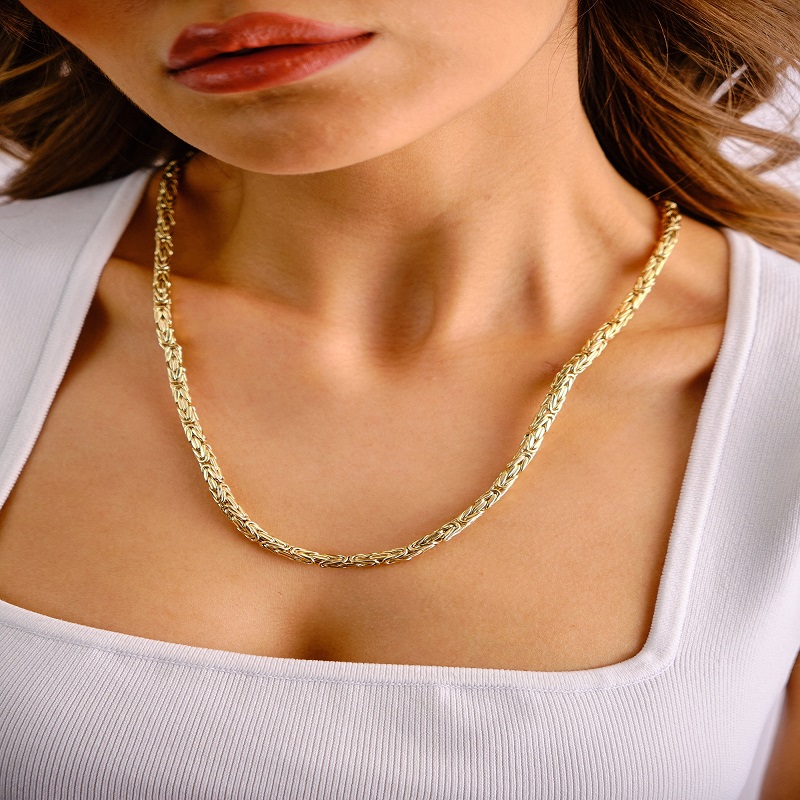
Selecting Durable Chains to Prevent Future Breaks
Choosing the right chain is the first step towards preventing future breaks. When purchasing a pearl necklace, consider the following factors:
- Chain Type: Some chain types, like herringbone or snake chains, are more prone to kinking or breaking. Opt for more durable designs like cable or box chains.
- Material Quality: High-quality metals such as sterling silver, gold, and stainless steel are less likely to break compared to cheaper alloys.
- Thickness: A thicker chain is generally stronger than a fine, delicate chain and can withstand more wear and tear.
- Clasp Type: Sturdy clasps like lobster claws are less likely to fail compared to spring ring clasps.
Proper Storage and Handling to Avoid Necklace Damage
How you handle and store your necklaces significantly impacts their longevity. Follow these guidelines:
- Avoid Tangles: Always hang necklaces or lay them flat in a jewellery box with dividers to prevent tangling and undue stress on the chains.
- Gentle Use: Don’t yank or pull your necklace when removing it. Gently unclasp it to avoid straining the chain and clasps.
- Keep It Dry: Moisture can cause certain metals to tarnish or rust. Always remove your necklace before swimming or showering.
- Limit Exposure to Chemicals: Perfumes, lotions, and cleaning agents can damage your necklace. Apply these products before putting on your jewellery.
Routine Inspection and Care for Lasting Wear
Regularly inspecting and caring for your necklaces can help catch small issues before they turn into big problems. Incorporate these habits into your routine:
- Frequent Checks: Periodically exam links and clasps for signs of wear or damage, and have them repaired if necessary.
- Professional Cleaning: Occasionally take your necklace to a jeweller for a professional cleaning and inspection.
- Prompt Repairs: If you detect any damage, address it immediately to prevent further deterioration.
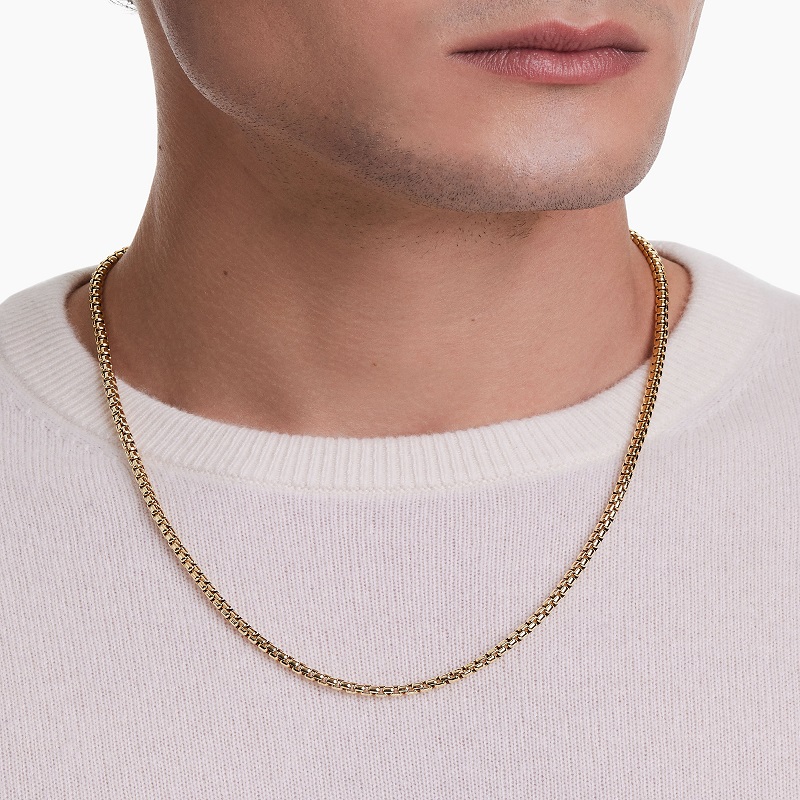
What are the advantages of chain necklace
The shorten necklace stands as a timeless and versatile accessory that holds enduring appeal in the realm of fashion and personal style. Its intrinsic elegance, sleek aesthetics, and adaptable nature have solidified its position as a go-to choice for individuals seeking to add a touch of sophistication and refinement to their ensembles.
Versatility in Styling
- Adaptability: Chain necklaces are renowned for their adaptability and flexibility, seamlessly complementing a wide spectrum of fashion styles, from casual to formal, and effortlessly enhancing an array of outfit choices.
- Layering Possibilities: The slender and elegant profile of chain necklaces makes them an ideal candidate for layering, providing opportunities to create dynamic and personalized looks by combining multiple chains of varying lengths, styles, and textures.
- Transitional Appeal: Chain necklaces effortlessly transition across different occasions, seamlessly blending with both daywear and evening attire, offering a timeless and versatile accessory option for diverse settings and personal expressions.
Symbolism and Meaning
- Timeless Elegance: The classic and minimalist design of chain necklaces embodies timeless elegance and sophistication, serving as a symbol of enduring style and refined aesthetics that transcends fleeting fashion trends.
- Minimalist Symbolism: The understated and sleek appearance of chain necklaces conveys a sense of refinement, simplicity, and sophistication, making them a favored option for individuals seeking accessories with subtle yet impactful symbolism.
- Elegance and Grace: Chain necklaces often carry connotations of elegance and grace, reflecting poise, confidence, and understated beauty, thereby serving as a symbolic representation of individual style and personal allure.
Styling Statement
- Focal Point Accessory: Chain necklaces serve as a striking focal point that draws attention to the neckline and collarbone, adding a touch of refinement and sophistication to various ensembles as a standalone statement piece.
- Enhances Necklines: The sleek and fluid lines of Shark Tooth Necklace accentuate the natural curves of the neckline, providing a visual framing effect that complements and enhances the inherent beauty of necklines and décolletage.
- Layering Impact: The layering potential of chain necklaces contributes to a dynamic and impactful styling effect, introducing depth, texture, and visual interest to an ensemble while expressing a personalized and curated style statement.
How to fix a chain necklace? By integrating these maintenance tips into your regular practices, you can increase the resilience of your necklaces and enjoy them for many years to come. Couple this with the repair techniques discussed earlier, and you’re equipped to handle any surprises that might occur with your beloved jewellery collection.
